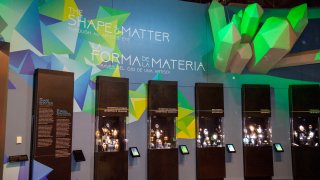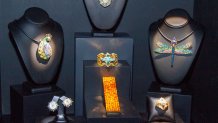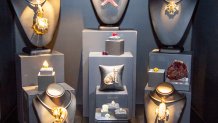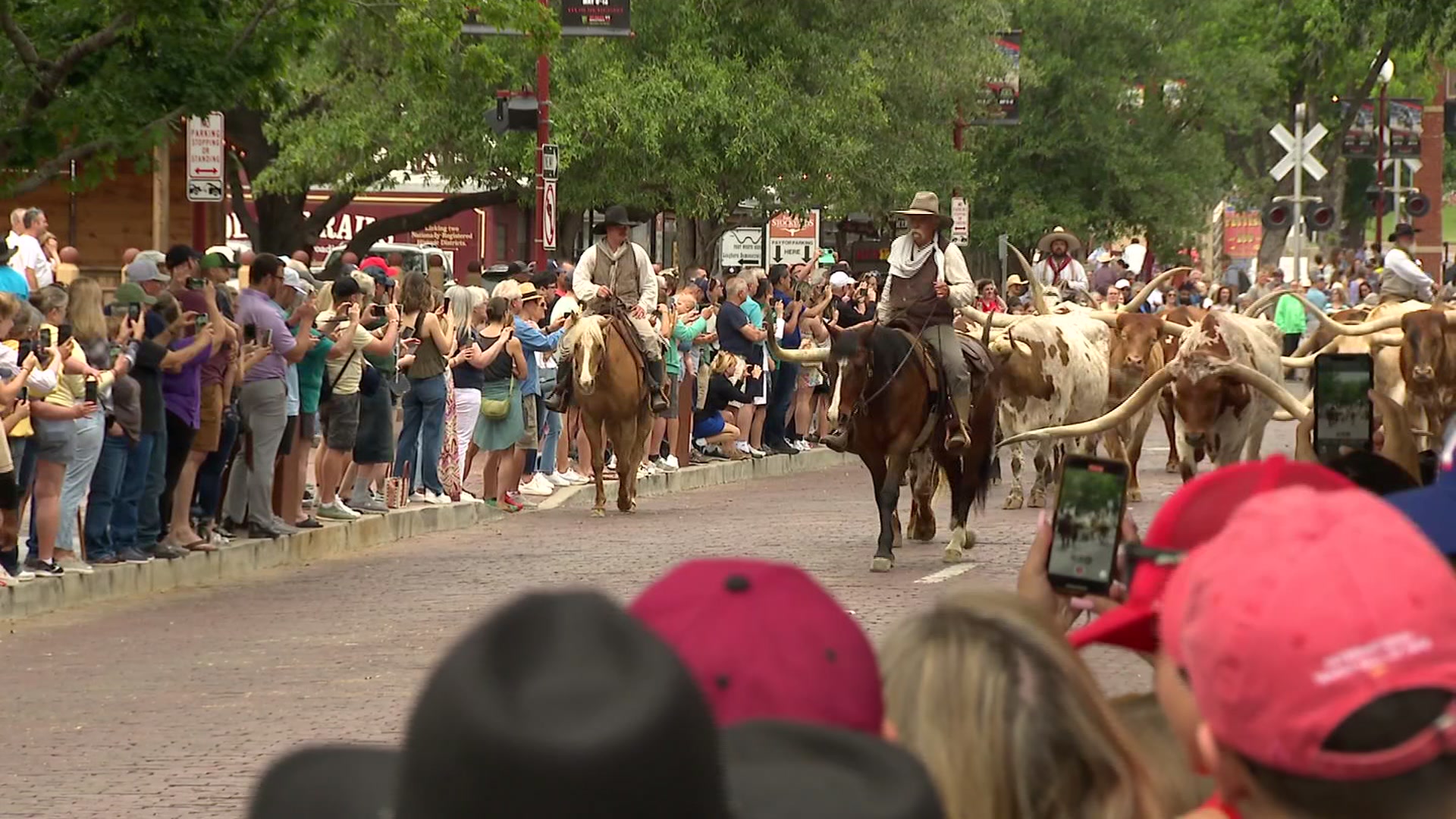
All that glitters is at The Shape of Matter: Through An Artist’s Eye, a special exhibition showcasing the work of internationally renowned jewelry designer, Paula Crevoshay. The exhibition is on view at the Perot Museum of Nature and Science in Dallas through April 20.
Featuring approximately 70 pieces of Crevoshay’s jewelry, this exhibition is at the intersection of science and art. “It’s nature’s art,” said Kimberly Vagner, director of Gems and Mineral Center of Excellence at the Perot Museum.
The jewelry is organized by the gemstone’s crystal systems, beginning with most symmetrical to least symmetrical. “The story that we’re telling is basically looking at the mineral to the cut gemstone to the finished jewelry and then talking about the different crystal systems that minerals form,” Vagner said.

Get DFW local news, weather forecasts and entertainment stories to your inbox. Sign up for NBC DFW newsletters.
Knowing the science of minerals and gems is critical to creating beautiful jewelry.
“It’s really important for jewelers to understand these crystal systems because that dictates how these gems behave. When you cut them and we set them, we need to know all of that. Otherwise, we might break the stone when it is being cut or when they are being set,” Vagner said.
While these necklaces, bracelets, earrings, and broaches are bold statement pieces, Vagner says the jewelry feels good to wear. “When you think about designing jewelry and making it a really good piece of jewelry, you have to think about the symmetry of the piece, how it is going to lay on the body,” Vagner said. “Have you ever had a ring that always ends up moving over to one side because it’s off-balance? That’s the math side of it, the science side of it.”
The Scene
There are surprises in the exhibition. Among the diamond, sapphire, amethyst, and opal minerals and gemstones is a perfectly formed gold crystal. “That is real gold. That is how it formed. We didn’t do anything to it. That’s naturally how it came out of the ground,” Vagner said. “This is what a gold crystal looks like.”
Crevoshay’s work has been featured at several museums, her sparkling works artistically illustrating the basic concepts of gemology. “Her background is art,” Vagner said. “That’s why when you look at these pieces you might get that sense of a painterly touch to them with this mixture of very colorful gemstones.”
Crevoshay discusses her favorite gemstones and how she creates her pieces.
NBC DFW: What inspires your designs?
Paula Crevoshay: I look to the natural world. Inspiration is all around me. Finding subject matter is not the problem; deciding what to do next is the challenge!
NBC DFW: You work with a wide array of gemstones. Do you have a favorite gemstone to work with?
PC: I love them all! I feel like I have been given the large box of crayons! Different stones can evoke different emotions. Some are exciting and others are soothing.
That said, I do love opals. I have often said that they all look like they may have been painted by Monet. I am also partial to tourmalines because of the extensive range of colors they come in.
NBC DFW: Including the design process, how long does it take you to create one piece of jewelry?
PC: Simple designs, with all the stones on hand, can be completed in six to eight weeks. More elaborate projects take eight to twelve months. The Man ‘o War took twenty-seven months, and the Garden of Delight box I made in collaboration with Nicolai Medvedev took four and a half years.
Synergy & Symbiosis, a collaborative collection of twelve pieces created with Glenn Lehrer, was started in February of 2010 and should be ready for its debut at the Alfie Norville Museum in Tucson at the end of February 2022.
The truth is because every jewel is an original work of art, the efficiencies that come from mass production don’t come into play, and we never know when we start something exactly how long it will take, particularly if we insist that everything be done to the highest standard.

NBC DFW: How do you decide which stones to use in which pieces? Do you work with what is available or do you search for specific gemstones for pieces?
PC: When I see a flower or an animal, I immediately know what stones I would use in creating its portrait. Some stones, like diamonds, are readily available in profusion and I can get them delivered the next day. Other stones can take months and even years to find, particularly if they are very rare or from deposits that have been mined out, in which case I have to search the world for someone who has old stocks or wait and accumulate stones as they slowly come onto the market.
NBC DFW: Your jewelry has been showcased at several museums. How do you think showing these pieces in a museum helps people better understand gemstones and the art and science of making jewelry? Why are exhibitions like this important?
PC: Art can provide a window or a bridge to learning about our world and our place in it. When people see a mineral specimen, they see a beautiful object. When they see a jewel, they can imagine wearing it or seeing it on someone else. That makes the connection personal. Because it can be personal, it excites the curiosity to learn more about what it is, how it came to be, and what it might mean.
Learn more: https://www.perotmuseum.org/exhibits-and-films/permanent-exhibit-halls/lyda-hill-gems-and-minerals-hall.html



